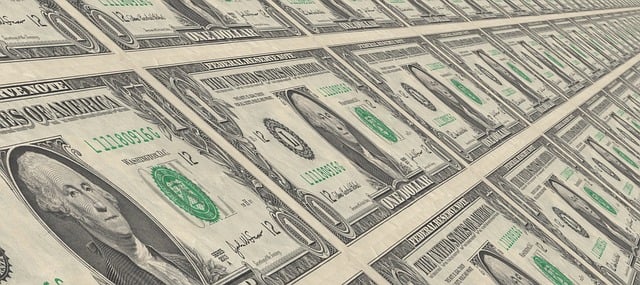
Updated Currency Rates of every country doesn’t just use the same currency. It might seem like life would be simpler if we didn’t have to exchange money or figure out conversions in our heads when traveling. However, most countries maintain their own Updated Currency Rates for a reason: each nation has a unique economic situation and wants to make monetary choices that best suit its own interests and needs. To understand these choices, it helps to know why currencies differ in value and how these values can change over time.
Currencies have different values.
A Snickers bar might cost one dollar in the United States, but in Indonesia, it could be over 14,000 rupiah. Does that mean chocolate is 14,000 times more expensive in Indonesia? Not really—when you convert rupiah to U.S. dollars, the price is actually about the same.
Read more aboud Trendy gadgets and technological
Read more aboud Current rates of different currency
So, who determines a currency’s value? For a few countries, it’s quite simple: they adopt a widely used currency, often the U.S. dollar or euro, and “peg” their own Updated Currency Rates to it. For instance, Belize’s central bank set its currency at half the value of a U.S. dollar. These types of currencies are called fixed or pegged. Nations usually peg their currency to provide stability for investors, who prefer to avoid the risk of sudden changes in value. If a Updated Currency Rates loses value, the worth of investments can drop as well.
Graphic uses a straight arrow to show fixed currency and a jagged arrow to show floating currency. For further details, contact cfr_education@cfr.org.
However, most exchange rates aren’t fixed—they “float,” meaning their values fluctuate based on different economic factors. As of June 2023, one U.S. dollar is equal to around eighty-two Indian rupees. Twelve years ago, a dollar exchanged for fifty rupees, and over forty years ago, only eight rupees were needed for a dollar. Over time, the rupee has lost value, or depreciated, making it worth less. A depreciating Updated Currency Rates is often described as weakening because it buys less foreign money. On the other hand, the Israeli new shekel was worth just nineteen U.S. cents in 2003 but increased to twenty-seven cents in June 2023, a 42 percent rise. Over time, the shekel has strengthened or appreciated, becoming more valuable in comparison to other currencies.
Currencies are traded just like other commodities. These exchanges mostly occur in foreign exchange markets, which are platforms for buying and selling different currencies. A currency’s value rises when many people want to buy it (high demand) and falls when fewer people want it (low demand). Similarly, if a large quantity of a Updated Currency Rates is available in the market (high supply), its value tends to decrease, whereas limited availability (low supply) can push its value up. As you’ll see, factors like a country’s appeal to investors, commodity prices, and inflation can influence currency supply and demand.
A country’s appeal to investors can impact the value of its Updated Currency Rates. Countries that are politically and economically stable are often seen as good places to invest. The more attractive a country is to investors, the more its currency tends to strengthen. This happens because foreign investors need the local currency to make investments. For instance, a French investor wanting to buy South Korean stocks would need South Korean won, and this demand increases the won’s value.
Conversely, countries facing instability tend to be less appealing to investors. When investors are uncertain about a country’s future, demand for its currency usually drops. This was evident in the United Kingdom after the 2016 Brexit vote. Uncertainty about how leaving the European Union would affect the UK economy made investors hesitant, which caused the British pound sterling to lose value.
Oil exports represent a significant portion of Canada’s economy. When a foreign company wants to purchase Canadian oil, it must convert its own currency into Canadian dollars. If oil prices increase, the company will need more of its currency to buy the same amount of oil, raising the demand for Canadian dollars and strengthening its value. Conversely, if oil prices fall, the company requires less of its currency, reducing demand for Canadian dollars and lowering its value.
Inflation also influences a currency’s worth. Inflation occurs when prices rise, which generally reduces the purchasing power of a currency. High inflation can make a country’s exports more expensive, decreasing their appeal to foreign buyers. At the same time, domestic consumers may turn to cheaper foreign goods, exchanging their currency for other currencies. Both effects—lower foreign demand and higher supply of domestic currency in the market—tend to weaken the currency.
Moderate inflation—around 1 to 2 percent per year—is normal and indicates a healthy economy. However, hyperinflation, an extreme and uncontrolled rise in prices, can severely devalue a currency. For example, between 2008 and 2009, Zimbabwe faced hyperinflation after the government printed excessive money to pay off enormous debt incurred while addressing a domestic food crisis. Prices skyrocketed, with inflation rates exceeding 100 billion percent.
Currency fluctuations create both winners and losers. Producers benefit when their currency is weaker because it makes their products more affordable abroad. Consumers, on the other hand, gain when their currency is strong, as they can buy more for the same amount of money. For instance, Americans traveling overseas benefit from a strong dollar.
Some countries prioritize certain groups when managing their currency. Japan, for example, relies heavily on exports, so a weaker yen makes Japanese products cheaper for foreign buyers. In contrast, many Americans prefer inexpensive imported goods, which are easier to buy when the dollar is strong.
Most nations have their own form of money, though there are exceptions. The euro, for example, is used by twenty European countries. A shared currency simplifies travel and investment within the eurozone—the region made up of these countries—because people can compare prices and move money without converting currencies. This benefits everyone: smaller European nations attract more investment, while larger nations gain easier access to broader markets. Over 340 million people use the euro daily.
A diagram shows that the European Central Bank manages interest rates, the money supply, banking rules, and foreign currency reserves, while national governments handle taxes, budgets, pensions, and similar matters. For additional information, contact cfr_education@cfr.org.
Source: European Union; European Commission.
However, these advantages come with challenges. Countries in the eurozone give up control over their monetary policy to the European Central Bank, which includes representatives from each member state. This means individual countries cannot fully respond to their own economic situations, such as variations in labor productivity. The eurozone’s success also depends on trust: nations must believe the European Central Bank will make decisions that serve everyone. Likewise, if one country experiences a financial crisis—as Greece did in 2009—the impact can spread throughout the eurozone.
Because of these risks, it’s unlikely that a shared currency like the euro will appear in other regions. For now, most people who travel internationally or invest abroad will continue to exchange money and monitor currency fluctuations.
Exchange rates indicate how much of one currency you can obtain with another. Because of this, they are usually represented as pairs of currencies.A frequently cited currency pair is GBP/USD, representing the British pound and the US dollar.
For instance, if the GBP/USD exchange rate is 1.25, it means you would receive US$1.25 for every £1 you convert (assuming the market rate and excluding fees).You can also look at it the other way around. At the same time, the USD/GBP rate could be 0.80, meaning each US$1 would get you £0.80.
Exchange rates can significantly impact the amount you receive when converting money.A rising currency value compared to others can indicate a country’s economy is improving, or at least expected to improve. For example, if GBP is gaining strength against USD, it is in higher demand at that time.
Moderate inflation, which is the increase in prices for goods and services, is generally a sign of a growing economy as it reflects rising demand. However, excessive inflation can be problematic, making goods and services less affordable.
Central banks take this into account when setting interest rates. For example, the Bank of England aims for an inflation rate of 2%.If inflation is below target, a central bank may lower interest rates. Reduced rates make borrowing cheaper and saving less attractive, encouraging spending. Higher spending can then push inflation up.
Conversely, if inflation is climbing too quickly, interest rates may be raised to curb spending and slow down price increases.Higher interest rates can strengthen a currency, attracting more foreign investment. More investment means more money flowing into a country, which can increase demand for its currency.
A country’s trade balance with the rest of the world also affects its currency. Nations that export more than they import, called a trade surplus, usually have stronger currencies than those with trade deficits.For instance, if overseas buyers purchase goods and services from the UK, they usually pay in pounds. The higher a country’s exports, the greater the demand for its currency.
There are several ways to assess an exchange rate. The most common method is through a bilateral exchange rate, which shows the value of one currency in terms of another. Bilateral exchange rates are usually expressed against the US dollar (USD), as it is the most widely traded currency in the world. For example, considering the Australian dollar (AUD), the AUD/USD rate indicates how many US dollars you would receive for each Australian dollar exchanged. If the AUD/USD rate is 0.75, it means that exchanging 1 AUD would give you 75 US cents.
Bilateral exchange rates are commonly seen in everyday life and frequently reported in the news. Consumers encounter them when traveling abroad or purchasing goods and services from foreign countries. Businesses deal with them when buying production inputs internationally or when exporting their products and services.
Cross rates
Bilateral exchange rates also allow the calculation of ‘cross rates.’ A cross rate is an exchange rate determined using a third currency. For instance, if the exchange rates for the euro (EUR) against the US dollar and the Australian dollar against the US dollar are known, the exchange rate between the euro and the Australian dollar (EUR/AUD) can be computed using the formula EUR/AUD = EUR/USD × USD/AUD.
Trade-weighted index (TWI)
Although bilateral rates are the most commonly cited and reported in the media, a trade-weighted index (TWI) gives a more comprehensive view of currency trends. A TWI reflects the value of a domestic currency relative to a weighted average of several foreign currencies, rather than a single one. The weights are generally determined by the proportion of trade with each trading partner (based on total trade, imports, or exports). Therefore, a TWI indicates whether a currency is appreciating or depreciating on average against its trading partners. TWIs usually show smaller fluctuations than bilateral rates because gains and losses among the various bilateral rates often counterbalance each other.




